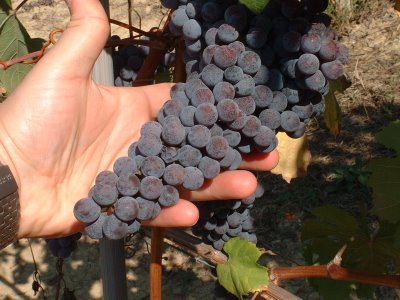 We stuck with the Piedmont's local Barbera wines during our Italy trip. Barbera d'Asti and Barbera d'Alba. That same grape has been grown up there at least since the 13th century.
We stuck with the Piedmont's local Barbera wines during our Italy trip. Barbera d'Asti and Barbera d'Alba. That same grape has been grown up there at least since the 13th century.
I did not realize that the Barbera grape is the most abundantly-grown grape in Italy. These are basically good table wines, nothing too complicated or fancy, and far down on the wine totem pole from the great Northern Italian wines like Amarone and the Nebbiolo grape-based Barbaresco and Barolo.
About Barbera d'Alba, this site says:
In the hilly area around Alba, only vineyards in the hills with suitable slopes and orientations are considered adequate for production. The terrains must be primarily clayey-calcareous or sandy-calcareous in character. DOC recognition is excluded for terrains with northern exposures and the bottoms of valleys that are flat or semi-flat. The colour of the wine is intense ruby red when young with a tendency to garnet after ageing.
This site says:
The high-in-acid Barbera Grape of north-western Italy is a chameleon-like grape which changes considerably according to yield. As an everyday variety, it is a juicy glugger but it can metamorphose into a concentrated, rich, plumy and cherryish wine with undertones of sweet vanilla and spice when aged in small new casks. In Argentina, it tends to the former style with a little less acidity thanks to plentiful Andean sunshine.
Photo: Barbera grapes


 We stuck with the Piedmont's local
We stuck with the Piedmont's local